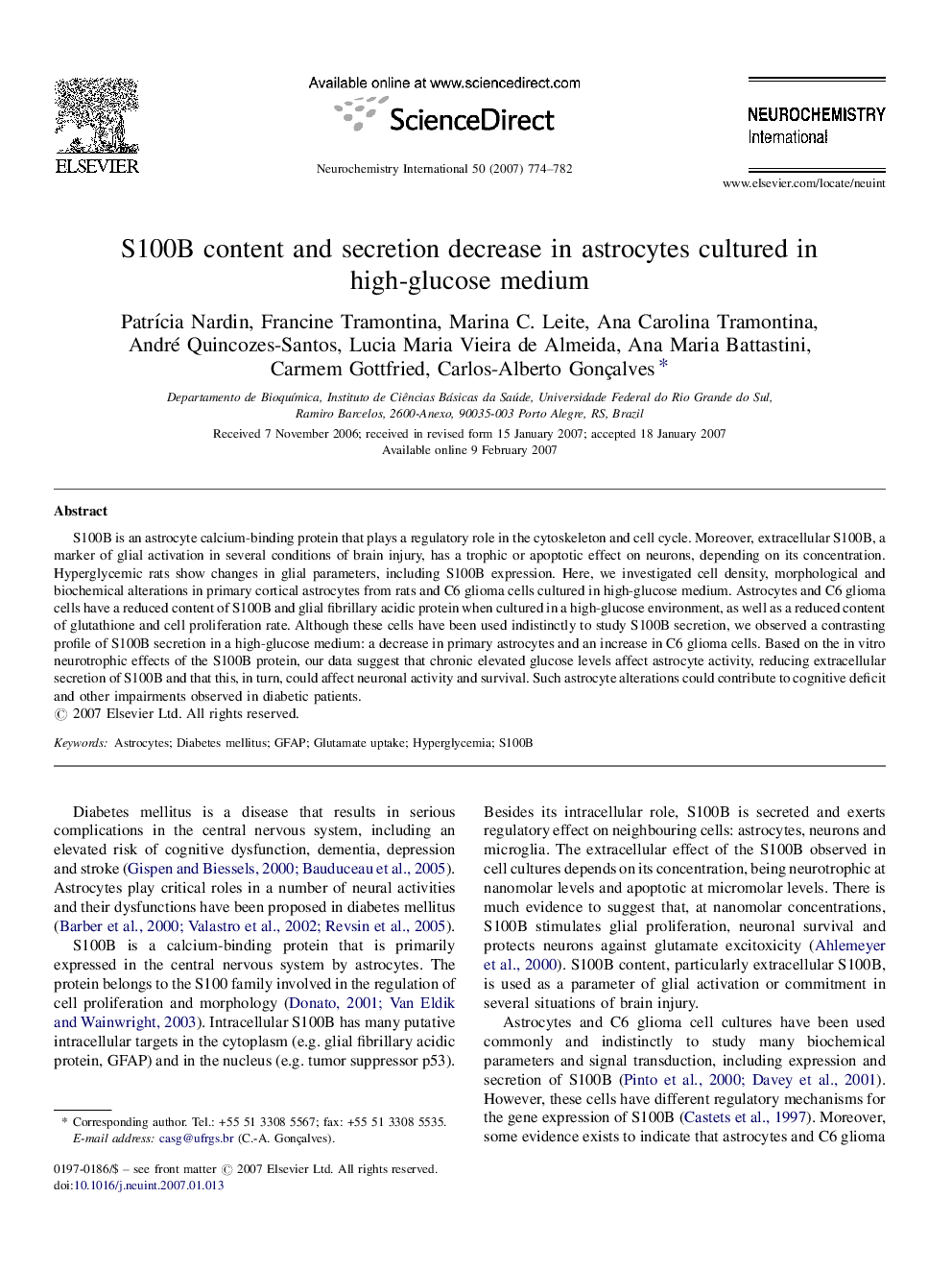| Article ID | Journal | Published Year | Pages | File Type |
|---|---|---|---|---|
| 2201852 | Neurochemistry International | 2007 | 9 Pages |
S100B is an astrocyte calcium-binding protein that plays a regulatory role in the cytoskeleton and cell cycle. Moreover, extracellular S100B, a marker of glial activation in several conditions of brain injury, has a trophic or apoptotic effect on neurons, depending on its concentration. Hyperglycemic rats show changes in glial parameters, including S100B expression. Here, we investigated cell density, morphological and biochemical alterations in primary cortical astrocytes from rats and C6 glioma cells cultured in high-glucose medium. Astrocytes and C6 glioma cells have a reduced content of S100B and glial fibrillary acidic protein when cultured in a high-glucose environment, as well as a reduced content of glutathione and cell proliferation rate. Although these cells have been used indistinctly to study S100B secretion, we observed a contrasting profile of S100B secretion in a high-glucose medium: a decrease in primary astrocytes and an increase in C6 glioma cells. Based on the in vitro neurotrophic effects of the S100B protein, our data suggest that chronic elevated glucose levels affect astrocyte activity, reducing extracellular secretion of S100B and that this, in turn, could affect neuronal activity and survival. Such astrocyte alterations could contribute to cognitive deficit and other impairments observed in diabetic patients.
